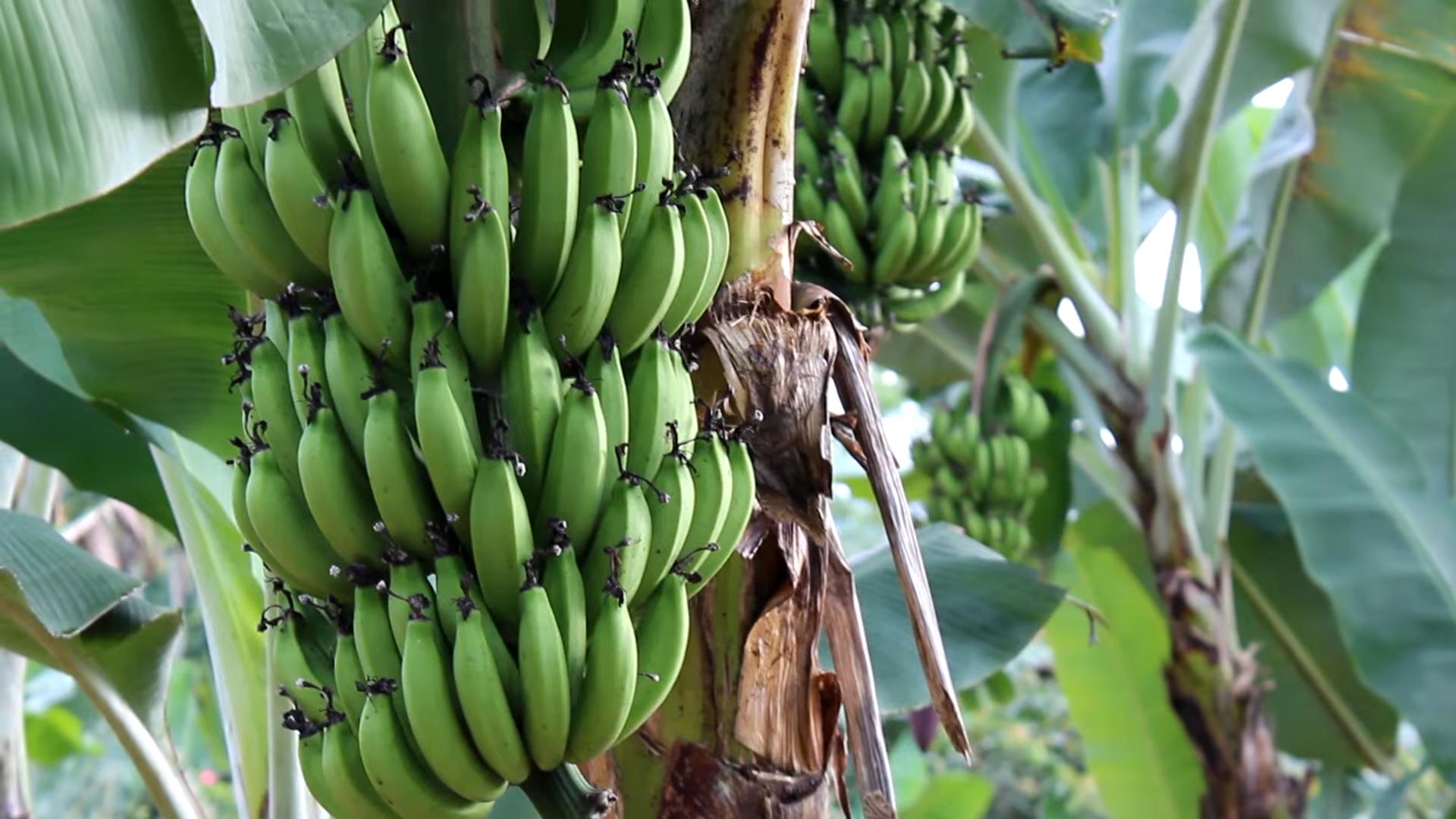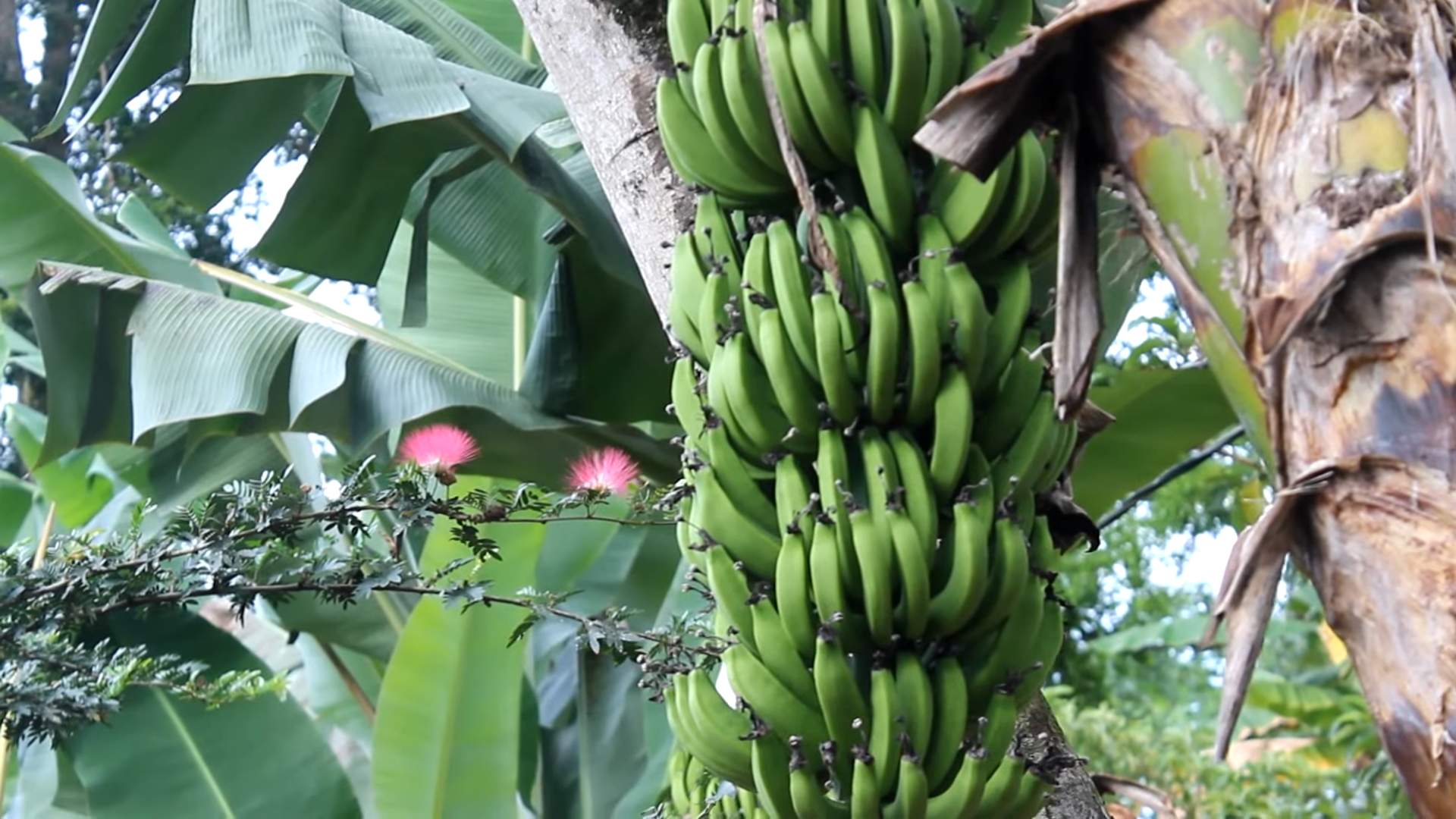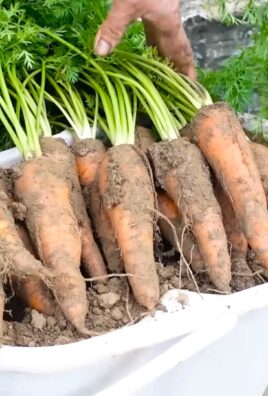Grow Bananas at Home? Absolutely! Imagine plucking a perfectly ripe, sweet banana straight from your own backyard. Sounds like a tropical dream, right? Well, it’s more achievable than you might think, and I’m here to show you how with some simple DIY tricks and hacks.
Bananas have a rich history, originating in Southeast Asia and spreading across the globe thanks to explorers and traders. They’ve been a staple food source for centuries, and in many cultures, they symbolize prosperity and good fortune. Now, you can bring a little bit of that history and good fortune to your own home!
Why bother learning how to grow bananas at home? Well, for starters, homegrown bananas taste incredible – far superior to anything you’ll find in the supermarket. Plus, it’s a fantastic way to connect with nature, learn about plant life, and impress your friends and family. Let’s be honest, who wouldn’t be amazed by a banana tree thriving in your garden? More importantly, you’ll know exactly what went into growing your food, avoiding any unwanted pesticides or chemicals. This DIY guide will provide you with the knowledge and simple techniques to successfully cultivate these delicious fruits, even if you don’t live in a tropical climate. Get ready to embark on a rewarding gardening adventure!

Growing Bananas at Home: A Tropical Treat You Can Cultivate Yourself!
Hey there, fellow plant enthusiasts! Ever dreamt of plucking a ripe, homegrown banana right from your own backyard? Well, guess what? It’s totally achievable, even if you don’t live in the tropics! I’m going to walk you through everything you need to know to successfully grow bananas at home, from choosing the right variety to harvesting your delicious bounty. Let’s get started!
Choosing the Right Banana Variety
Not all banana plants are created equal, especially when it comes to growing them outside of their ideal tropical climate. You’ll want to select a variety that’s known for its cold hardiness and shorter growing season. Here are a few of my favorites:
* ‘Dwarf Cavendish’: This is a popular choice for home growers because it’s relatively compact, reaching only 6-10 feet tall. It produces sweet, flavorful bananas and is more tolerant of cooler temperatures than some other varieties.
* ‘Rajapuri’: Another dwarf variety, ‘Rajapuri’ is known for its creamy, slightly tangy bananas. It’s also relatively cold-hardy and produces fruit quickly.
* ‘Ice Cream’ (Blue Java): This unique variety produces bananas with a distinct vanilla-like flavor and a bluish tint when unripe. It’s surprisingly cold-hardy and a fun conversation starter!
* ‘Orinoco’: This is a more cold-hardy variety that can tolerate temperatures down to the low 20s (Fahrenheit) for short periods. The bananas are thick-skinned and have a slightly tangy flavor.
Important Note: Before you commit to a variety, check your local climate and growing conditions to ensure it’s a good fit. Your local nursery can be a great resource for advice!
Preparing for Planting: Location, Soil, and More!
Bananas are tropical plants, so they need plenty of sunlight, warmth, and well-draining soil to thrive. Here’s how to set the stage for success:
* Sunlight: Bananas need at least 6-8 hours of direct sunlight per day. Choose a location in your yard that gets plenty of sun throughout the day.
* Soil: Bananas prefer rich, well-draining soil with a slightly acidic pH (around 6.0-6.5). If your soil is heavy clay or sandy, amend it with plenty of organic matter, such as compost, aged manure, or peat moss. This will improve drainage and provide essential nutrients.
* Wind Protection: Banana plants have large leaves that can be easily damaged by strong winds. Choose a location that’s sheltered from strong winds, or consider planting a windbreak of shrubs or trees.
* Space: Even dwarf varieties need space to grow. Make sure you have enough room for the plant to reach its mature size without crowding other plants.
* Watering: Bananas need consistent moisture, especially during the growing season. Make sure the soil stays consistently moist, but not waterlogged.
Planting Your Banana Plant: A Step-by-Step Guide
Now for the fun part – planting your banana plant! Here’s how I do it:
1. Dig the Hole: Dig a hole that’s twice as wide and as deep as the root ball of your banana plant.
2. Amend the Soil: Mix the soil you removed from the hole with plenty of organic matter, such as compost or aged manure. This will provide essential nutrients and improve drainage.
3. Position the Plant: Carefully remove the banana plant from its container and gently loosen the roots. Place the plant in the hole, making sure the top of the root ball is level with the surrounding soil.
4. Backfill the Hole: Backfill the hole with the amended soil, gently tamping it down around the plant.
5. Water Thoroughly: Water the plant thoroughly after planting to help settle the soil and establish the roots.
6. Mulch: Apply a layer of mulch around the base of the plant to help retain moisture, suppress weeds, and regulate soil temperature. I like to use organic mulch, such as straw, wood chips, or shredded leaves.
Caring for Your Banana Plant: Watering, Fertilizing, and Pruning
Once your banana plant is in the ground, it’s important to provide it with the care it needs to thrive. Here’s what I do to keep my banana plants happy and healthy:
* Watering: Water your banana plant regularly, especially during the growing season. The soil should be consistently moist, but not waterlogged. Check the soil moisture regularly and water when the top inch or two feels dry. During the winter months, you can reduce watering frequency.
* Fertilizing: Bananas are heavy feeders and need plenty of nutrients to produce healthy growth and fruit. Fertilize your banana plant regularly with a balanced fertilizer that’s high in potassium. I like to use a slow-release fertilizer in the spring and then supplement with a liquid fertilizer every few weeks during the growing season.
* Pruning: Banana plants produce “pups,” which are small shoots that grow from the base of the plant. These pups can compete with the main plant for resources, so it’s important to prune them regularly. I usually remove all but one or two pups per plant. You can also prune off any dead or damaged leaves.
* Winter Protection: If you live in an area with cold winters, you’ll need to protect your banana plant from frost and freezing temperatures. There are several ways to do this, depending on the severity of the cold.
* Mulching: Apply a thick layer of mulch around the base of the plant to insulate the roots.
* Wrapping: Wrap the trunk of the plant with burlap or blankets to protect it from frost.
* Moving Indoors: If you’re growing your banana plant in a container, you can move it indoors to a warm, sunny location for the winter.
* Cutting Back: In colder climates, you can cut the plant back to the ground in the fall and cover it with a thick layer of mulch. The plant will regrow from the roots in the spring.
Dealing with Pests and Diseases
While banana plants are relatively pest-resistant, they can occasionally be affected by pests and diseases. Here are a few common problems and how to deal with them:
* Aphids: These small, sap-sucking insects can infest banana plants, causing stunted growth and distorted leaves. You can control aphids with insecticidal soap or neem oil.
* Spider Mites: These tiny pests can cause yellowing and stippling of the leaves. You can control spider mites with insecticidal soap or horticultural oil.
* Banana Weevils: These pests can bore into the base of the plant, causing it to weaken and eventually die. You can control banana weevils with insecticides or by removing and destroying infested plants.
* Fusarium Wilt: This fungal disease can cause yellowing and wilting of the leaves, eventually leading to the death of the plant. There is no cure for Fusarium wilt, so it’s important to prevent it by planting disease-resistant varieties and practicing good sanitation.
* Black Sigatoka: This fungal disease causes leaf spots and can reduce fruit yield. You can control Black Sigatoka with fungicides or by removing and destroying infected leaves.
My Tip: Regularly inspect your banana plant for signs of pests and diseases. Early detection and treatment can prevent serious problems.
Harvesting Your Bananas: The Sweet Reward!
After all your hard work, it’s finally time to harvest your bananas! Here’s how to tell when they’re ready:
1. Check the Shape: The bananas should be plump and rounded, rather than angular.
2. Observe the Color: The bananas should have changed from a deep green to a lighter green or yellow, depending on the variety.
3. Test the Ripeness: Gently squeeze a banana. It should feel slightly soft, but not mushy.
4. Harvest the Bunch: Once the bananas are ripe, cut the entire bunch from the plant with a sharp knife.
Ripening Your Bananas:
Bananas are typically harvested when they’re still green and allowed to ripen off the plant. To ripen your bananas, simply place them in a paper bag at room temperature. You can add an apple or a banana to the bag to speed up the ripening process. The bananas should ripen in a few days.
Enjoy Your Homegrown Bananas!
Congratulations! You’ve successfully grown bananas at home. Now it’s time to enjoy the fruits of your labor. Eat them fresh, use them in smoothies, bake them into bread, or make banana pudding. The possibilities are endless!
Growing bananas at home is a rewarding experience that can bring a touch of the tropics to your backyard. With a little care and attention, you can enjoy delicious, homegrown bananas for years to come. Happy growing!

Conclusion
So, there you have it! Growing bananas at home might seem like a tropical dream reserved for those living in equatorial climates, but with a little know-how and this simple DIY trick, you can absolutely cultivate your own banana bounty, no matter where you reside. We’ve demystified the process, breaking it down into manageable steps that anyone can follow.
Why is this DIY trick a must-try? Because it empowers you to connect with nature in a tangible way. Imagine the satisfaction of harvesting your own homegrown bananas, knowing you nurtured them from sprout to fruit. Beyond the sheer joy of gardening, you’re also gaining access to incredibly fresh, flavorful bananas, free from the pesticides and long-distance transportation associated with store-bought varieties. Plus, you’re contributing to a more sustainable lifestyle by reducing your carbon footprint.
But the benefits don’t stop there. This method is surprisingly adaptable. While we’ve focused on a specific technique, feel free to experiment with different banana varieties suited to your climate. Dwarf Cavendish is a popular choice for indoor growing, but you might also consider trying ‘Rajapuri’ or ‘Ice Cream’ bananas for a unique flavor profile.
Consider these variations to personalize your banana-growing journey:
* Container Size: Adjust the size of your container as your banana plant grows. Repotting into larger containers will provide more room for root development and support a larger plant.
* Fertilizer: Experiment with different organic fertilizers to find what works best for your plant. Banana peels themselves make excellent fertilizer!
* Lighting: If you live in a region with limited sunlight, consider supplementing with grow lights to ensure your banana plant receives adequate illumination.
* Humidity: Bananas thrive in humid environments. If your home is dry, use a humidifier or mist your plant regularly to increase humidity levels.
* Companion Planting: Explore companion plants that can benefit your banana tree, such as ginger or lemongrass.
This DIY trick isn’t just about growing bananas; it’s about fostering a deeper understanding of plant life, embracing sustainable practices, and enjoying the fruits (literally!) of your labor. It’s about transforming your living space into a mini-tropical oasis.
We wholeheartedly encourage you to give this DIY banana-growing trick a try. Don’t be intimidated by the prospect; even if you’re a novice gardener, you can achieve success with a little patience and dedication. Remember to document your progress, take photos, and most importantly, share your experiences with us! We’re eager to hear your stories, learn from your successes (and even your challenges), and build a community of home banana growers. Let us know what worked for you, what didn’t, and any tips or tricks you discovered along the way. Your insights could help others embark on their own banana-growing adventures.
So, grab your supplies, get your hands dirty, and prepare to be amazed by the magic of growing your own bananas at home. Happy growing!
Frequently Asked Questions (FAQ)
Q: What type of banana plant is best for growing indoors?
A: The Dwarf Cavendish banana plant is generally considered the best option for indoor growing. It’s a smaller variety, typically reaching a height of 6-10 feet, making it manageable for container gardening. Other suitable varieties include ‘Rajapuri’ and ‘Ice Cream’ bananas, known for their unique flavors and relatively compact size. When selecting a banana plant, consider the available space, lighting conditions, and your personal taste preferences. Research the specific needs of each variety to ensure it thrives in your indoor environment.
Q: How much sunlight does a banana plant need?
A: Banana plants are sun-loving and require at least 6-8 hours of direct sunlight per day to thrive. If you’re growing your banana plant indoors, place it near a south-facing window where it can receive ample sunlight. If natural sunlight is limited, supplement with grow lights. LED grow lights are an energy-efficient option that can provide the necessary spectrum of light for healthy growth. Rotate your plant regularly to ensure all sides receive adequate light exposure. Insufficient sunlight can lead to stunted growth and reduced fruit production.
Q: What kind of soil is best for banana plants?
A: Banana plants prefer well-draining, fertile soil that is rich in organic matter. A good potting mix for banana plants should consist of a combination of peat moss, perlite, and compost. The peat moss helps retain moisture, while the perlite improves drainage and aeration. Compost provides essential nutrients for healthy growth. Avoid using heavy clay soils, as they can become waterlogged and lead to root rot. You can also amend your potting mix with slow-release fertilizer to provide a steady supply of nutrients.
Q: How often should I water my banana plant?
A: Banana plants require consistent moisture but should not be overwatered. Water your banana plant thoroughly when the top inch of soil feels dry to the touch. Allow excess water to drain from the bottom of the pot to prevent root rot. During the growing season (spring and summer), you may need to water more frequently than during the dormant season (fall and winter). Adjust your watering schedule based on the weather conditions and the moisture level of the soil. Overwatering can lead to yellowing leaves and root rot, while underwatering can cause wilting and stunted growth.
Q: How do I fertilize my banana plant?
A: Banana plants are heavy feeders and require regular fertilization to support healthy growth and fruit production. Use a balanced fertilizer with a ratio of 10-10-10 or 15-15-15. Apply fertilizer every 2-3 weeks during the growing season (spring and summer). Reduce fertilization during the dormant season (fall and winter). You can also supplement with organic fertilizers, such as compost tea or banana peel tea. Banana peels are rich in potassium, which is essential for fruit development. Avoid over-fertilizing, as it can lead to salt buildup in the soil and damage the roots.
Q: How long does it take for a banana plant to produce fruit?
A: It typically takes 9-15 months for a banana plant to produce fruit, depending on the variety, growing conditions, and climate. After the plant reaches maturity, it will produce a flower stalk, which will eventually develop into a bunch of bananas. Once the bananas are fully formed, they will take several weeks to ripen. You can harvest the bananas when they are still slightly green and allow them to ripen indoors.
Q: How do I deal with pests and diseases on my banana plant?
A: Banana plants can be susceptible to various pests and diseases, including aphids, spider mites, and fungal infections. Regularly inspect your plant for signs of infestation or disease. If you detect any pests, treat them with insecticidal soap or neem oil. For fungal infections, use a fungicide. Proper air circulation and drainage can help prevent fungal problems. You can also use companion plants, such as marigolds, to deter pests.
Q: Can I grow a banana plant from a seed?
A: While it’s possible to grow a banana plant from a seed, it’s a very slow and challenging process. Banana seeds have a hard outer shell that needs to be scarified before they can germinate. It can take several months for the seeds to sprout, and the resulting plant may not be true to type. It’s generally easier and more reliable to propagate banana plants from pups (suckers) that grow from the base of the mother plant.
Q: What do I do with the banana plant after it fruits?
A: After a banana plant fruits, the main stem will die back. However, new pups (suckers) will emerge from the base of the plant. You can remove the dead stem and allow the pups to grow into new banana plants. Alternatively, you can separate the pups from the mother plant and transplant them into individual pots. This is a great way to propagate new banana plants and expand your banana-growing operation.





Leave a Comment